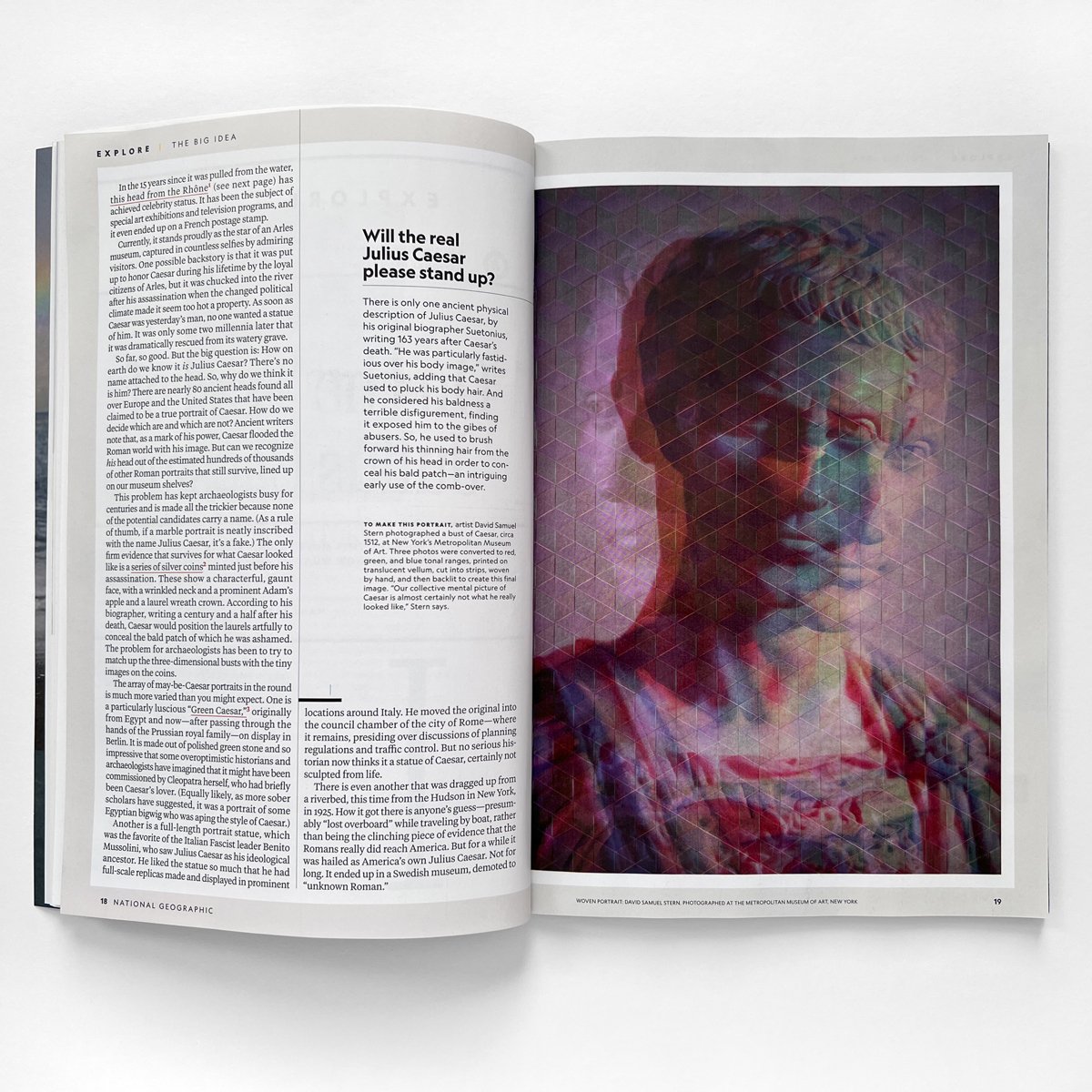Last summer National Geographic Partners commissioned me to make a Woven Portrait of the most famous of ancient Romans. It appears in this month's issue of National Geographic Magazine accompanying Cambridge historian Mary Beard’s article on the mystery of what he really looked like. I worked closely with National Geographic’s production lead Nicole Thompson and photo editor Maura Friedman to refine the artwork’s direction, and, after determining that a bust of Caesar in the collection of the Metropolitan Museum of Art, New York, would be the best subject on which to base my “portrait” of him, arrange a shoot there in July 2021.
Executing this piece opened some new avenues for me. For example, backlighting the completed woven portrait object. I had been tinkering with this idea for a few years, but presenting a piece that way never seemed appropriate given my interest in photographs as physical objects. That is, I think that when backlighting is introduced as a presentation mode, the emphasis seems to go toward light itself, rather than the artwork’s objectness. Also, the three photos of the bust that were woven together to make this artwork are photos that were not only taken from different angles, but also that were converted into three tonal ranges: red, green, and blue. When the R, G, and B photos were recombined via hand-weaving them together, they form an image which essentially averages to black and white. This is another idea I had tinkered with over the years, but I felt this was appropriate here because the marble portrait bust of Caesar and the wall in front of which it was sitting, were essentially all monochromatic.
I am planning to execute more Woven Portraits in this manner—including the possibility of photographing statues of individuals (or what those individuallys may have looked like, as is the case here). So, I consider this commissioned project to be a turning point in my work’s overall direction.
In any case, several months later, I’m pleased to highlight the artwork’s publication in the February issue of the magazine, which is out now. The article also appears on National Geographic’s website, linked above.





